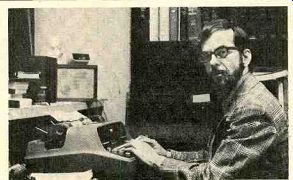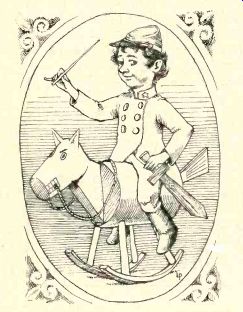
CONCERNING WARHORSES
----------------
A LOT of people listen to warhorses, a truism made evident by a sampling of our concert programs and record catalogs.

What is a warhorse? One can define the term by example. Just rattle off the first hundred or so compositions that come to your mind when someone says to you (as even some younger people are saying today): "I want to start listening to classical music." Beethoven's Fifth, Dvorak's New World, Rimsky-Korsakov's Scheherazade, Tchaikovsky's 1812, Beethoven's Moonlight Sonata, Grieg's Peer Gynt, Debussy's Clair de Lune, Ravel's Bolero, Puccini's "Un bel di," Verdi's Anvil Chorus, Mozart's Jupiter, Schubert's Trout, Gershwin's Rhapsody in Blue, and so on down the line. You will find one peculiar thing about the list, however; outside of the fact that they were all composed in the two hundred years between about 1730 and 1930, the only thing that ties those hundred or so pieces together is their ubiquity. They are not all symphonies, not all orchestral, not all lyrical, not all programmatic, not all nicknamed, not all sing able, not all romantic, and not all European and they are certainly not all masterpieces.
The point comes up because in the peculiar musical sophistication of the society in which we now live there are some people who will listen only to warhorses and others who will listen to anything except warhorses. The former attitude comes about through the misconception that anything that has become that popular must be great, and that a herd of war horses, therefore, is a herd of thoroughbreds, a carefully considered collection of master pieces. But that can hardly be true. No one familiar with Ravel's music, for example, would ever choose Bolero as his greatest piece. No one conversant with Tchaikovsky's music would ever choose the Overture 1812 as any thing close to the peak of his musical achievement. And yet it is Bolero and 1812 that are the warhorses, not L'Enfant et les Sortileges and the "Rococo" Variations.
People who never listen to warhorses do so on the grounds of definition: a warhorse, says the dictionary, is a musical composition which, from much repetition as part of the standard repertoire, has become hackneyed.
Since they do not want to waste their time listening to something that is hackneyed, they, of course, avoid warhorses. Now, that may have been rational behavior back in the days when all the classical music one could hear was in a concert or operatic presentation or on the radio; you had a choice of listening or not listening, but not of listening to something else. With the number of private thousand-record collections today, though, those limitations no longer apply-and neither does the definition. For me, for instance, Schubert's C Major String Quintet is a warhorse-I've heard it as often as any other piece of music and Tchaikovsky's 1812 is a once-in-a-decade experience.
Needless to say, I don't consider the Schubert Quintet hackneyed, no matter how many times I hear it, and I feel just the other way about the Tchaikovsky. The question then arises: are all warhorses hackneyed or only some of them? To push the matter further, can a masterpiece ever really become hackneyed, or is a predisposition to that woeful state intrinsic in some music and brought out only by repetition? I submit that it is the latter, and that, when it comes to defining what a "warhorse" is, the dictionary is wrong. Scheherazade, 1812, Poet and Peasant, Bolero, Les Preludes, Peter and the Wolf, The Fountains of Rome all become hackneyed through repetition because they are to a degree hackneyed at the start; their musical content is not rich enough to stand up to constant repetition. But Beethoven's Fifth, Mozart's Eine Kleine Nachtmusik, Schubert's Unfinished, Debussy's Afternoon of a Faun, Schumann's Kinderscenen? No matter how negatively one reacts to the sound of the first few notes, no matter with what honest intensity one says, "Oh, not that again," one is inevitably drawn into the musical experience.
All these pieces may be warhorses, but some are better warhorses than others.
A warhorse is a warhorse, then, because and only because-it is played and played and played. Its quality must only be sufficient for someone to want it to be played again. One wonders, though, how it was that certain pieces became warhorses in the first place.
Was it the total lack of complicating counter point in Scheherazade that gave rise to its popularity? Did the audience at the first performance of The Sorcerer's Apprentice clam or for a repeat performance the following week-and every week thereafter? Was there some omnipotent imp at the premiere of The Firebird who said to himself, "This piece must be played and played to death and I will see that it happens"? Such are the little unanswerable questions of musical history-like wondering just where all those MacDonalds came from.
So, while the information is still fresh in the mind, I propose a number of pieces that, for various reasons, seem to me to qualify today as warhorses-and with these nominations I include, for posterity's benefit, the reasons: Richard Strauss' Also Sprach Zarathustra, because it has made it into not one but at least two Hollywood films (can you name the second?), at least one television commercial, and innumerable half-time band entertainments at football games where it is invariably said to represent "the future" (bra!).
Hugo Alfven's Midsommarvaka, because, under the title of "Swedish Rhapsody" and in brutally hacked-up form, it was a juke-box staple some years ago, and besides, it is, in its original form, probably as good a nationalistic rhapsody as anybody has written regardless of geography.
Stravinsky's Le Sacre du Printemps, be cause, even disregarding its appearance many years ago in Walt Disney's Fantasia, it is consistently represented in the catalog by at least two dozen recordings, new ones arriving as older ones are deleted, and it has even be come some people's favorite piece of music.
Joaquin Rodrigo's Concierto de Aranjuez, because it has been recorded by every guitarist with any pretensions at all-by some of them twice-excepting only those unable to convince their record companies that what the world needs is yet another recording of it.
Also because it has been played and recorded (at least in part) by Miles Davis, the Modern Jazz Quartet, Gil Evans, and other non-guitarists, making it, perhaps, the First Classical Guitar-music Crossover Hit.
Jean Joseph Mouret's Suite de Symphonies No. 1 (Fanfares for Trumpets . . .), because it is heard every time Masterpiece Theater goes on or off the air, which is a lot more than it was heard in Mouret's lifetime, and a lot for any piece to be heard.
Carl Orff's Carmina Burana, because it long ago left behind its original categorization as a pleasantly derivative, quixotic piece of pseudo-antiquarianism to become a public nuisance, both on and off records.
Also see:
THE POP BEAT, PAULETTE WEISS